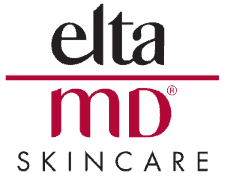

Actinic Keratosis Treatment in Boca Raton
Also called solar keratosis, actinic kerratosis or AK forms when the skin is damaged by sun exposure or indoor tanning.
Anyone diagnosised with AK should be under the care of a dermatologist. Actinic keratosis are precancerous lesions and left untreated can develop into a type of skin cancer called squamouus cell carcinoma. By seeing your dermatologist for regular skin exams, AK’s can be diagnosed and treated before they develop into a skin cancer. People with actinic keratosis also have a higher risk of other types of skin cancers. When found early most skin cancers can be cured.
Actinic Keratosis Symptoms
- Rough-feeling patch on skin
- Rough patch or growth that may feel painful when rubbed
- Itching or burning of a lesion
Actinic Keratosis can come and go. It may appear on the skin, remain for months, then flake off and disappear. They may then reappear after sun exposure. Even if it does not reappear you should still see your dermatologist. An AK forms when the top layer of the skin is badly damaged. If the damage continues to grow deeper a skin cancer can develop.
Actinic Keratosis Treatments
AKs usually appear after age 40. People who live in places that get intense sunlight all year, like here in South Florida, may get AKs earlier. Actinic Keratosis also often appear much earlier in people who use tanning beds and sun lamps. UV rays damage our skin. When we are young, the body can repair some of the damage. Over time, the damage accumulates, and the body is less able to repair itself. We eventually see UV-damaged skin. If UV rays continue to hit the skin, people get Actininc Keratosis.
Your DermPartners dermatologist can offer all of the most advanced treatment options for AKs. These include:
- Cryotherapy: Destroys visible AKs by freezing them. The treated skin often blisters and peels off within a few days to a few weeks. This is the most common treatment.
- Chemical peel: This is a medical chemical peel. You cannot get this peel at a salon or from a kit sold for at-home use. This strong peel destroys the top layers of skin. The treated area will be temporarily inflamed and slightly sore, but healthy new skin will replace it.
- Your dermatologist carefully removes a visible Actinic Keratosis with an instrument called a curette. After curettage, your dermatologist may use electrosurgery to remove more damaged tissue. Electrosurgery cauterizes (burns) the skin. New healthier skin will appear.
- Photodynamic therapy (PDT): A solution is applied to make the skin more sensitive to light. After a few hours, the treated skin is exposed to a visible light, such as blue or laser light. The light activates the solution and destroys AKs. As the skin heals, new healthy skin appears.
- Laser resurfacing: Much like a chemical peel, a laser can remove the surface layer of the skin. This destroys Actinic Keratosis cells. After treatment, the skin will be raw and sore. The skin heals within 1 or 2 weeks, revealing healthier new skin.
- Prescription medicine
Schedule an appointment and come see us. Your doctor can discuss all the options available to you and the benefits associated with each.














